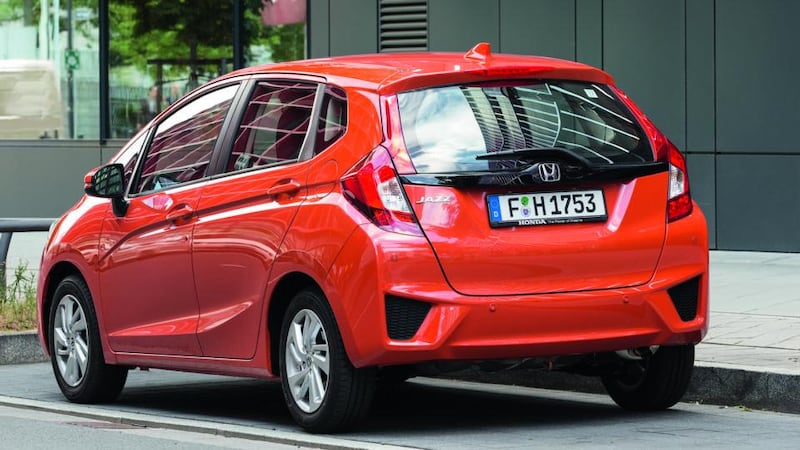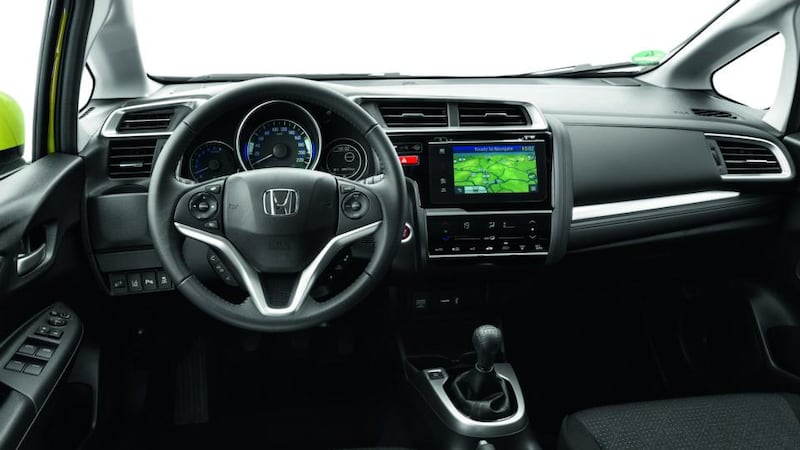There are, essentially, two Honda Jazzes on offer. Although they look identical on the outside and, mostly, on the inside, they are two really quite different cars and it's all down to how they shift.
The Jazz has been with us since 2001, when Honda launched it as its first proper assault on the European small car market. Typically of Honda, it didn't do things conventionally. While most of its rivals were (and are) essentially shrunken versions of larger hatchback brethren, the Jazz did (and does) things a little differently. It was tall and stubby, and had seats that fold flat and flip up, depending on what you want to load into the back. It still is and it still does.
The Jazz has done well for Honda – 5.5 million sales around the world of the first two versions, with 4,100 of those in Ireland and those are 4,100 loyal customers. As Honda Ireland's sales director, John Saunders, told us, "Jazz customers are very, very precious about their cars".


They tend to spend big too. Back before the recession put the kibosh on pretty much everything, a former Honda exec once told me that the average price paid for a Jazz, inclusive of options was €20,000 – and this was just in Ireland, not a global figure. That financial resilience could be a good thing, as the Jazz looks significantly more expensive, in its most basic form, than most rivals.
Toys for cash
The thing is though that it's not basic at all. At €17,395, the entry level SE version looks steep compared to the smallest stickers you'll find on, say, a Fiesta or Polo, but the levels of standard equipment fitted to the Jazz are far away and above what almost any rival offers – air condition, emergency autonomous braking, Bluetooth, cruise control, automatic headlights and wipers, and remote audio controls. Only a Nissan Note comes close in terms of toys for cash, and that's a car that feels nowhere near as mechanically sophisticated as the new Jazz.
Nor as spacious. The Jazz has always been unusually roomy, verging on being a junior MPV, but Honda has moved things on a notch with this one. It’s 95mm longer than before, albeit still clocking in at a smidgen under four metres, but the wheelbase is 30mm longer and, thanks to some clever interior packaging, rear legroom has increased by 115mm, partially at the expense of front seat legroom – the front seats don’t go back quite enough for very tall drivers.
Those selfsame lanky people will also be poorly served by the four seat bases which are too short to offer proper support for the backs of your legs, leaving you sitting rather too splayed out.
Practicality
There are compensations. The cabin looks and feels of the highest quality (as long as you don’t go digging too far up towards the windscreen or down towards the base of the doors) and the Jazz has an interior that appears to be of significantly higher quality than most other cars in the class.
And its practicality is not in doubt. The 354-litre boot vastly outstrips almost any rival, bar the exceptionally roomy Skoda Fabia Combi estate, and you can flip and fold the rear seats to your delight until you squeeze in what you need. Even a surfboard (long since the doyen of marketeers trying to appeal to a youthful demographic, ignoring the fact that all surfers drive VW vans) will fit inside the cabin.
There's only one engine on offer – a newly designed 1.3-litre iVTEC petrol with 102hp and 123Nm of torque. That may not sound like much in an era when we're used to saloon cars with F1-style power outputs, but it offers a significant advantage over some key competition. A Ford Fiesta 1.25 Zetec, for instance, carries a similar price tag but is 40hp behind the Honda . . .
And the two Jazzes I spoke of? Two cars that are the same car, actually, but divided by a gulf of gearbox. The optional CVT automatic transmission offer some distinct on-paper benefits. It shaves 10g/km off the CO2 figure and potentially pushes average fuel consumption north of 60mpg, but in actual use it’s just terrible.
Honda says that it has specifically tuned the CVT’s motions of belts and cones to suit European tastes, but like all such transmissions it leaves the engine blaring its head off at max rpm while it sluggishly accelerates.
The Jazz’s engine isn’t the sweetest sounding thing at the best of times but with the CVT, progress feels utterly horrid. It’s a little better if you select Sport mode and take full control with the steering wheel-mounted gearshift paddles, but even so we would just avoid the auto option.
Better by far is the manual. Honda is famed for the quality of its manual gearboxes and the Jazz’s is no exception. A six-speed unit (the old Jazz made do with a five-speeder) it snicks between cogs with a lovely, accurate, mechanical action. It’s light enough to be flicked with your fingertips when you’re cruising and also feels suitably sporty when you punch a change through with your elbow.
Do that and the Jazz feels positively sporty and, if not actually much quicker overall, then certainly more engaging. Refinement is much better too, and the car gets a chance to show off its better-than-decent isolation of tyre and wind noise.
While it’s no handling champ, the Jazz feels impressive to drive. Steering weight and accuracy is good, and the car feels well balanced through fast corners. The ride quality we’ll have to wait until we encounter Irish tarmac to judge, but it does feel a touch bouncy at times.
Common sense
As before, the Jazz looks like an expensive choice and Honda is offering the now de rigeur set of high-end options. Much was made of the fact that it has as much rear legroom as a Mercedes S-Class and Honda is giving you the chance to spec it up like a big Merc too.
Such items as the Honda Connect touchscreen infotainment, leave keeping assistant and more are on offer, as is an active speed limiter than reads road signs and theoretically stops you speeding. Annoying and intrusive, we soon switched it off and relied on common sense.
Common sense is though what forms the basis of the Jazz’s appeal. It’s not as handsome as a Fiesta or Polo, but it maxes out interior space, has a very high quality interior and feels spirited and engaging to drive. Avoid the auto option and it’s as good a small car as you’ll find.
Lowdown: Honda Jazz 1.3 iVTEC ES
Price: €17,395
Range starts at €17,395
Power: 102hp
Torque: 123Nm
0-100kmh: 11.2sec
Top speed: 190kmh
Claimed economy: 5.0l/100km (57mpg)
CO2 emissions: 116g/km
Motor tax: €200









